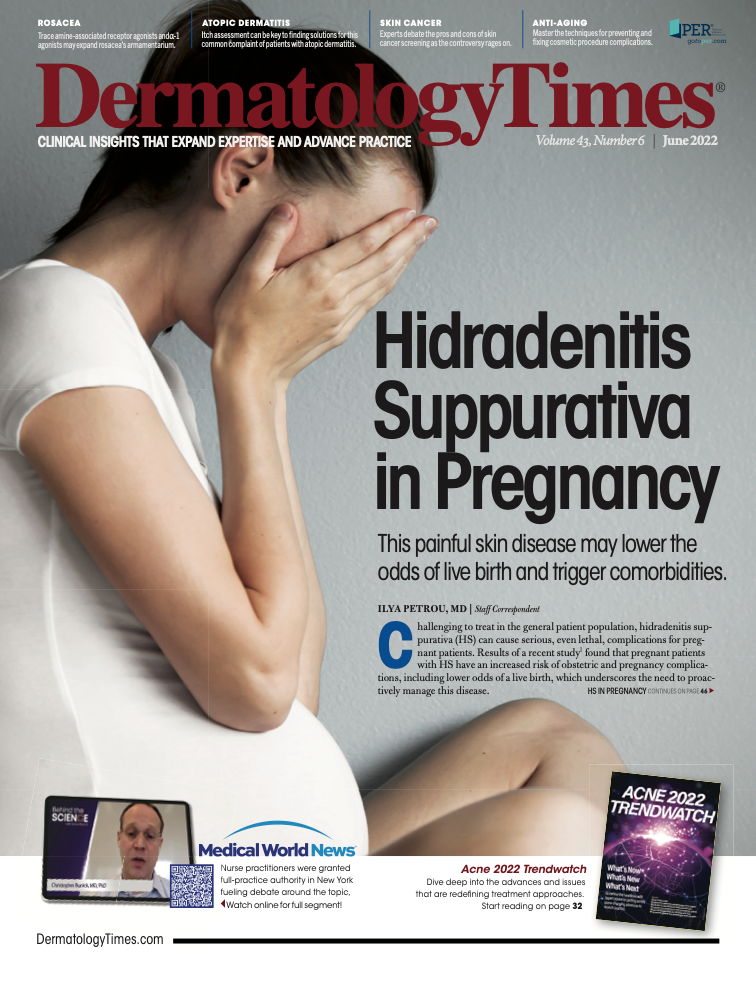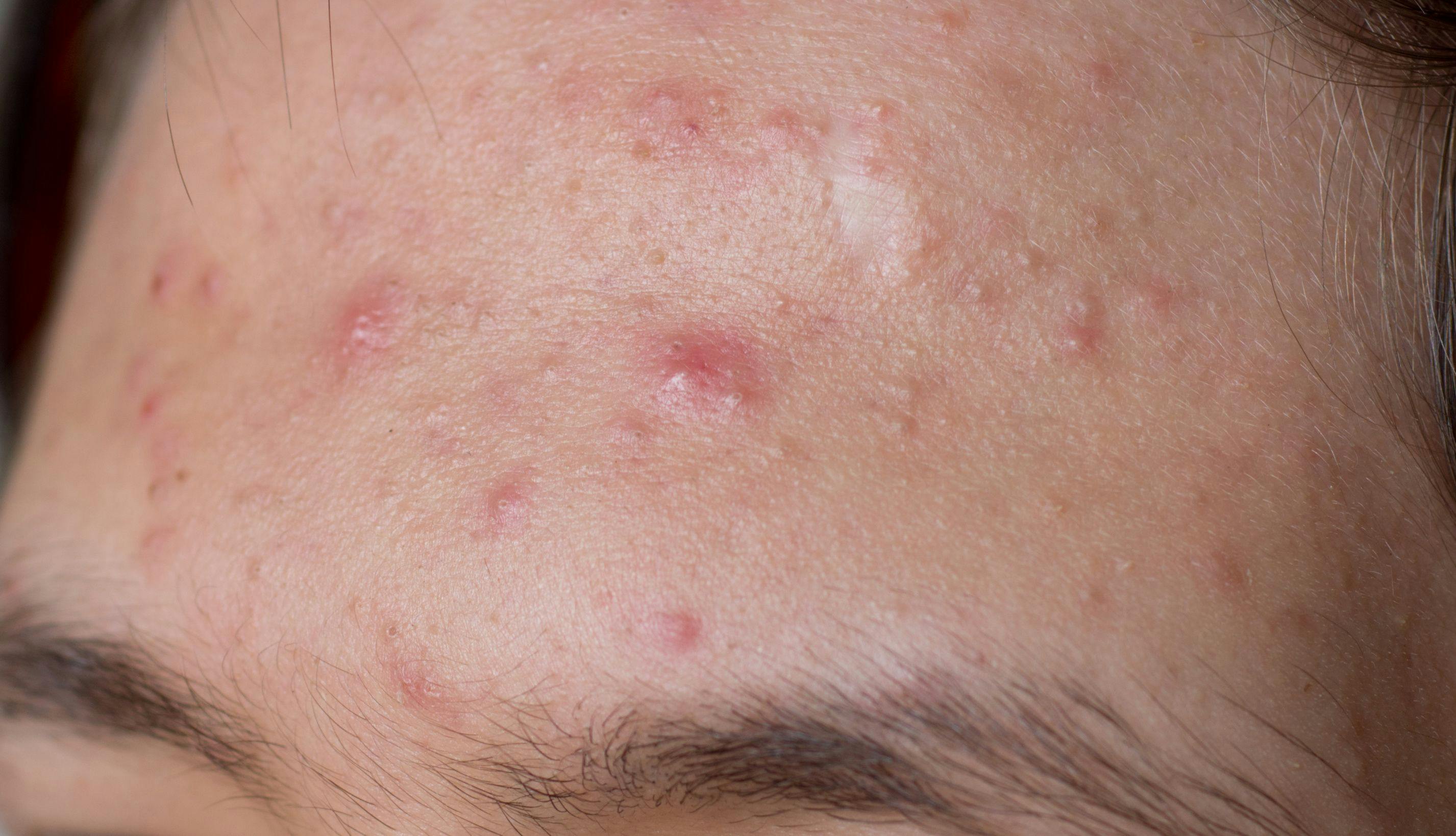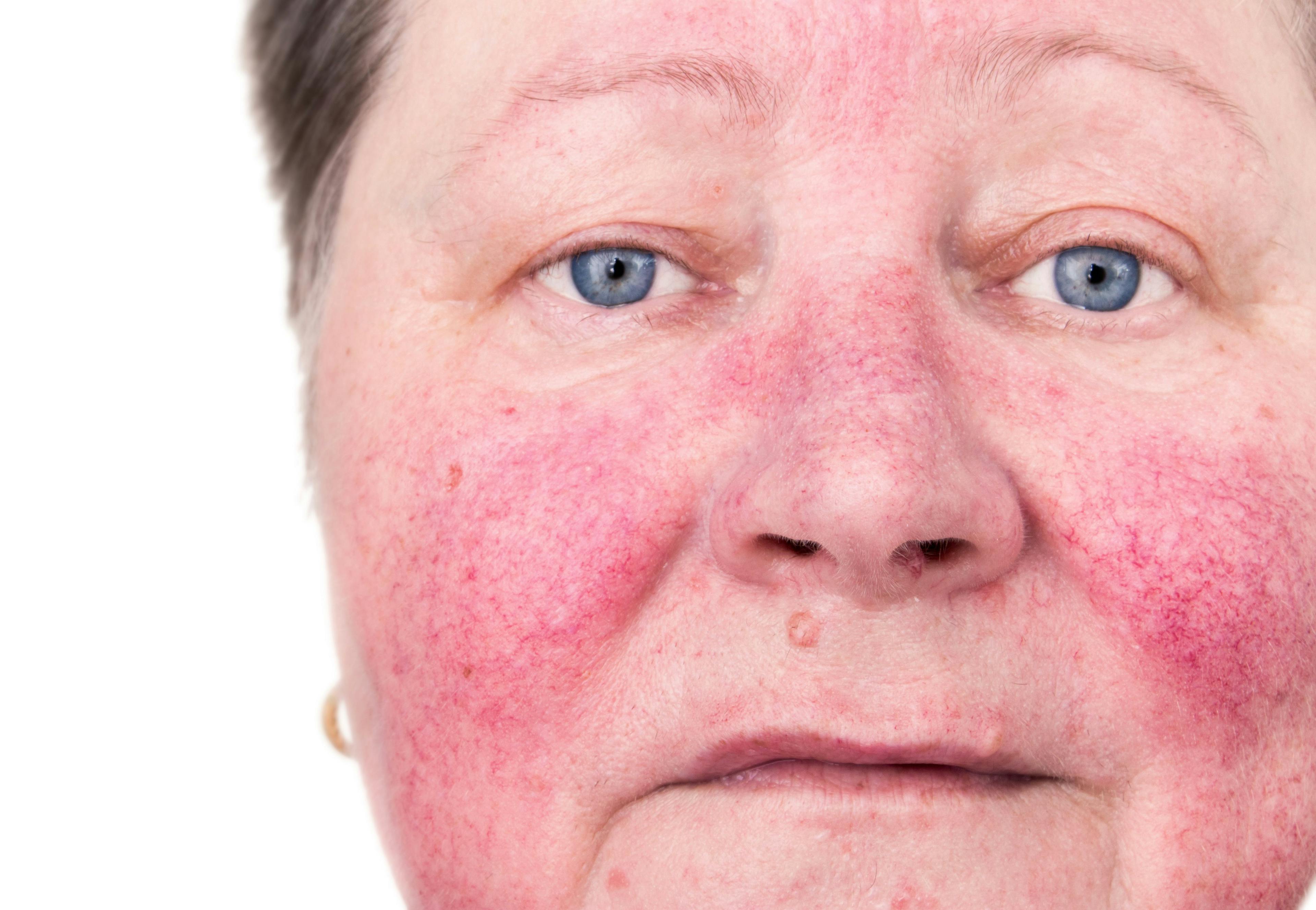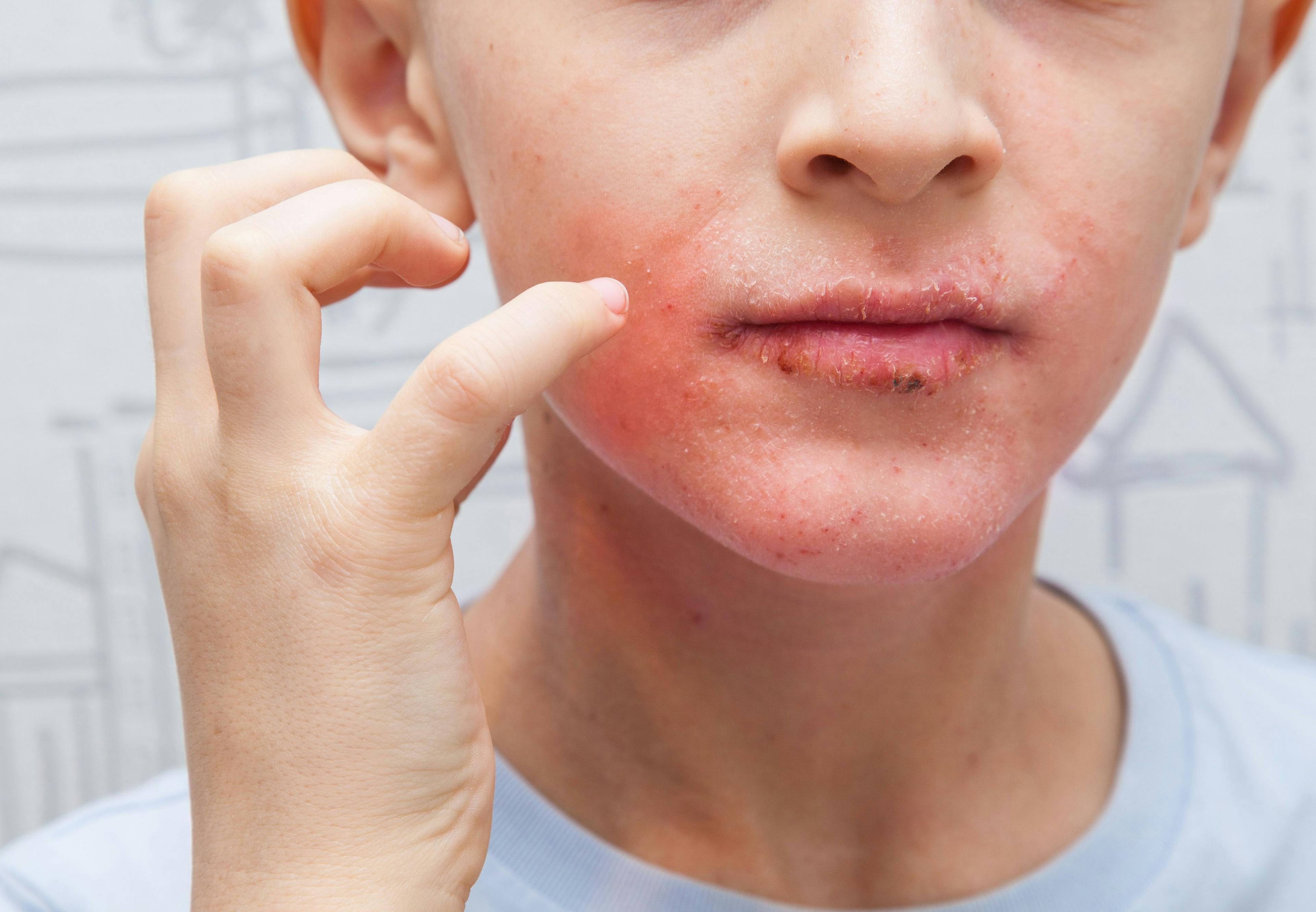- Acne
- Actinic Keratosis
- Aesthetics
- Alopecia
- Atopic Dermatitis
- Buy-and-Bill
- COVID-19
- Case-Based Roundtable
- Chronic Hand Eczema
- Chronic Spontaneous Urticaria
- Drug Watch
- Eczema
- General Dermatology
- Hidradenitis Suppurativa
- Melasma
- NP and PA
- Pediatric Dermatology
- Pigmentary Disorders
- Practice Management
- Precision Medicine and Biologics
- Prurigo Nodularis
- Psoriasis
- Psoriatic Arthritis
- Rare Disease
- Rosacea
- Skin Cancer
- Vitiligo
- Wound Care
Publication
Article
Dermatology Times
Controversies in Skin Cancer Screening: The Debate Rages On
Author(s):
Dermatologists continue to be split on the pros and cons of skin cancer screening, from overdiagnosis to early detection of thin melanomas.
Controversies exist in every field of medicine and Dermatology is no exception. Survival from melanoma, the most serious form of skin cancer, is heavily dependent on tumor stage. As such, skin cancer screening has the potential to reduce melanoma mortality by detecting tumors at an earlier stage which would positively effect prognosis. Despite this, the benefits of skin cancer screening remain controversial.1
Jason Bok Lee, MD, presented at the 2022 American Academy of Dermatology (AAD) Association Annual Meeting with the session, “2022 Debates: Controversies in Dermatology”. The meeting was held March 25 to 29, in Boston, Massachusetts. Lee, who is a professor, medical director, and clinical vice chair of the Jefferson Dermatopathology Center; director of the dermatopathology fellowship; and director of the Jefferson Pigmented Lesion Clinic, all at Thomas Jefferson University Hospital, Philadelphia, Pennsylvania, argued against skin cancer screening in a specific sub-session, titled, “Skin Cancer Screening: The USPSTF Has It All Wrong”.2
“There is strong epidemiologic evidence of overdiagnosis that our specialty cannot ignore and continuing the current strategy will only magnify the trend of overdiagnosis,” Lee said.
He further explained his viewpoint on this topic by first introducing the fact the United States Preventative Task Force (USPSTF) reports there is insufficient evidence of benefit for the screening of skin cancer in asymptomatic adults by a clinician and Medicare will not cover skin cancer screenings in this population.3 While the AAD and the Skin Cancer foundation advocate for screening, over 10 other influential health organizations have no official recommendation.
There exists an environment which promotes overdiagnosis in melanoma because there is a large reservoir of indolent disease, tests are sensitive to detecting large irregularities, the diagnostic gold standard is highly subjective and there is a fear of missing melanomas by clinicians and pathologists, he explained.
By highlighting this point, Lee hopes to “encourage clinicians to question the reliability of pathological diagnosis of thin small melanomas and dysplasia grading and consider the possibility of overdiagnosis.” Furthermore, melanoma screening is lacking high-quality clinical trials showing reduction in morbidity and mortality, which is one the major principles in cancer screening.4 Another epidemiologic signature of overdiagnosis is a rising incidence of mostly localized melanoma with no concurrent change in mortality.5 One study from Germany showed no reduction in morality after 10 years of follow up after initiation of a systematic skin cancer screening program.6
On the issue of genomic testing in melanoma and skin cancer screening, Lee said, “stage 1 disease accounts for most of the newly diagnosed melanomas each year with 5-year survival rates of 99% and there are no studies that show that the gene expression profile test has the discriminatory power to identify the tiny fraction of the cases that will progress.” He advocates that a change in strategy is needed. Subsequent research on skin cancer screening should be focused on studying the efficacy of targeted screening in patients who are considered to be at higher risk for this disease.7
Additionally, Lee has a message for experienced dermatologists who listened to his presentation. He wants these experienced providers to consider the assertion that screening may result in harm, even though this may seem counterintuitive. His goal was to introduce the concept of overdiagnosis, which he admits is hard to see at the patient level.
“If dermatology continues the current trend, the pattern of overdiagnosis will continue to be exaggerated to the point where credibility of the specialty is at stake,” he concluded.
Laura Ferris, MD, PhD, FAAD, argued in favor for skin cancer screening. Ferris is a professor of dermatology at the University of Pittsburgh Medical Center (UPMC) and director of clinical trials at UPMCs Department of Dermatology, where she focuses on skin cancer. She advocated for population-based skin cancer screening and argued that physicians, particularly dermatologists, detect melanomas that are thinner than those found by patients. Since thickness is an important predictor of melanoma survival, it makes sense that screening to find thinner lesions means patients with these screening detected melanomas will have a better outcome.
Unfortunately, dermatologists don’t have clear guidelines to help them choose who to screen and how often, she said. As a result of this, patients come in and get screened when they want to. Dermatologists have a difficult time counseling a young, healthy patient when they should get screened based on evidence-based research. This results in the fact that dermatologists are screening the most health-conscious patients who may not benefit the most from it. Dermatologists are not screening those most likely to die from melanoma such as elderly patients and male patients, Ferris explained. She highlighted the fact that a targeted screening program would likely show tangible benefits.
One group of expert dermatologists recommended annual skin exams for patients who are 35-75 years old with certain characteristics such as medical history (ie, history of immunosuppression), family history of skin cancer, physical traits such as multiple atypical nevi or Fitzpatrick skin type I-III and sunburn/indoor tanning history.8
“Skin cancer screening represents a large part of what we do as dermatologists and it is important to understand how this impacts patient outcomes because we should all be striving to make sure that we use this precious resource on our time and training to maximize benefits to our patients.”
She also commented on how her presentation will impact clinical practice in the future. “With the ability to collect more outcome data through the use of electronic health records and initiatives like DataDerm [dermatology's largest clinical data registry by the AAD], we hopefully will be able to generate evidence-based screening guidelines,” Ferris said.
This is crucial in the goal of helping to showcase the utility of melanoma skin cancer screening programs as there is a need for high-quality clinical trials showing a reduction in morbidity and mortality, she continued. Large clinical registries such as DataDerm and improvements in the use of electronic health records for medical research will aid in this endeavor.
Skin cancer screening is still a controversial issue in the field of Dermatology. More research is needed in this area to provide clinicians and patients with evidence-based guidance on this traditionally contentious issue.
References:
1. Brunssen A, Waldmann A, Eisemann N, Katalinic A. Impact of skin cancer screening and secondary prevention campaigns on skin cancer incidence and mortality: A systematic review. J Am Acad Dermatol. 2017;76(1):129-139.e10. doi:10.1016/j.jaad.2016.07.045
2. Lee JB, Ferris LK, Geronemus RG, et al. 2022 debates: controversies in dermatology. Presented at: American Academy Dermatology Association 2022 Annual Meeting; March 25-29, 2022; Boston, MA.
3. US Preventive Services Task Force. Screening for Skin Cancer: US Preventive Services Task Force Recommendation Statement. JAMA. 2016;316(4):429-435. doi:10.1001/jama.2016.8465
4. Croswell JM, Ransohoff DF, Kramer BS. Principles of cancer screening: lessons from history and study design issues. Semin Oncol. 2010;37(3):202-215. doi:10.1053/j.seminoncol.2010.05.006
5. Welch HG, Kramer BS, Black WC. Epidemiologic Signatures in Cancer. New England Journal of Medicine. 2019;381(14):1378-1386. doi:10.1056/NEJMsr1905447
6. Breitbart EW, Waldmann A, Nolte S, et al. Systematic skin cancer screening in Northern Germany. J Am Acad Dermatol. 2012;66(2):201-211. doi:10.1016/j.jaad.2010.11.016
7. Wernli KJ, Henrikson NB, Morrison CC, Nguyen M, Pocobelli G, Blasi PR. Screening for Skin Cancer in Adults: Updated Evidence Report and Systematic Review for the US Preventive Services Task Force. JAMA. 2016;316(4):436-447. doi:10.1001/jama.2016.5415
8. Johnson MM, Leachman SA, Aspinwall LG, et al. Skin cancer screening: recommendations for data-driven screening guidelines and a review of the US Preventive Services Task Force controversy. Melanoma Management. 2017;4(1):13-37. doi:10.2217/mmt-2016-0022

Newsletter
Like what you’re reading? Subscribe to Dermatology Times for weekly updates on therapies, innovations, and real-world practice tips.






























